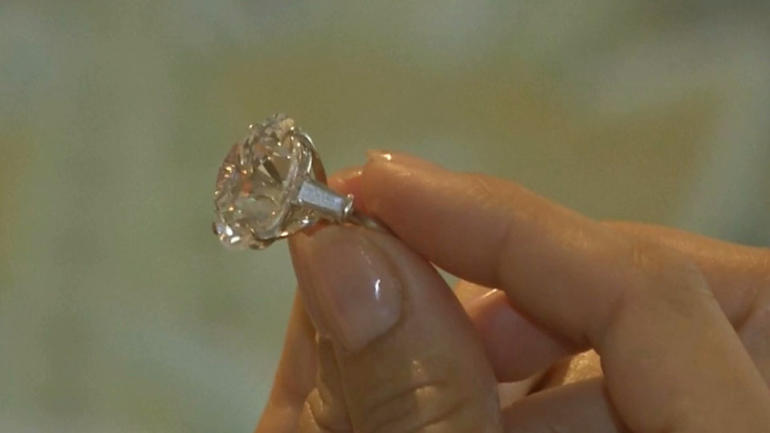They say diamonds are a girls’ best friend – but does it matter if they were created over millions of years underground – or if they were grown in a lab in just a few weeks?
CGTN’s June-wei Sum finds out more.
The U.S. Federal Trade Commission gave the man-made diamond industry a boost last summer, when it dropped the word “natural” from its definition of diamond.
“We’ve seen a lot of growth and interest in lab grown diamonds. Actually a recent survey that we did indicated that almost half of respondents respond positively to the idea of purchasing a lab diamond engagement ring. What we’re really seeing in the market is, we see celebrities like Meghan Markle and Penelope Cruz wear lab diamond jewelry, and really the interest is that lab diamonds are beautiful, affordable and they’re responsible,” said Audrey Brooks, the director of customer experience at Brilliant Earth.
“They have the same physical, chemical and optical properties as a natural diamond. They provide really good value because they tend to be at a lower price point than natural diamonds, and a lot of people are intrigued by the innovative technology behind them.”
According to analyst Paul Ziminsky, the market for jewelry made with lab grown diamonds is growing by 22 percent a year to over $5 billion in the next four years, and to almost $15 billion by 2035.
Right now, three countries – China, India and Singapore – produce the majority of all lab grown diamonds. Gem quality stones are often marketed as ethical and environmentally sound – but the FTC is discouraging terms like “eco-friendly” or “sustainable”, because they’re too general and hard to substantiate.
“Both mined diamonds and lab grown diamonds can be ethical but it comes down to each producer. For lab grown diamonds, what they have to do to call themselves ethical is really watch their energy sources,” said Cristina Villegas, the director of Mines to Markets at the nonprofit PACT.
The main critique of lab grown diamonds is because they might market themselves as environmentally sustainable.
Lab-created diamonds do avoid issues such as mining and labor. However, the World Bank says more than 40 million people work in artisanal and small-scale mining – digging not just for diamonds, but also gold, metals and other gemstones.
Governments including the U.S. and the U.K. are trying to improve working conditions for miners, providing millions of dollars in assistance in the aftermath of diamond wars in West Africa.
“They’ve produced some really remarkable results, not only is mining safer, there are better policies, it’s easier to become legal,” said Villegas. “When the diamonds have been mined out, they’re helping communities build fish ponds and move to agriculture, so there’s a life after diamonds.”
Saleem Ali discusses the environmental impact of lab-grown versus mined diamonds
CGTN’s Rachelle Akuffo spoke to Saleem Ali, Blue and Gold Distinguished Professor of Energy and the Environment, University of Delaware about the environmental and social impacts of both lab-created and natural diamonds. Dr. Ali is also a member of the UN Environment’s International Resource Panel.
 CGTN America
CGTN America
